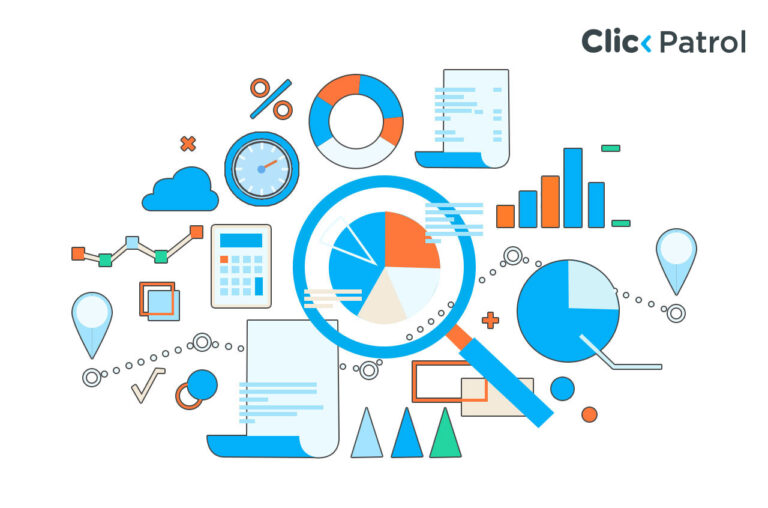
Automatic survey takers: How bots are revolutionizing customer feedback in 2025
Abisola Tanzako | Jul 01, 2025

Table of Contents
- What are automatic survey takers?
- How do automatic survey takers work?
- How to use survey bots for testing, UX, and optimization
- Benefits of automatic survey takers
- Best automated survey-taking tools
- Limitations and risks
- Best practices for ethical use of automated survey tools
- Smarter surveys for more innovative marketing
- FAQs
In 2025, over 60% of digital marketers will rely on automated tools for survey testing (Gartner, 2024). Surveys remain one of the most effective tools for marketers to understand customer behavior or measure campaign success.
However, not all surveys are equal. Old-style surveys have downsides: laborious data collection, human error, and scalability limitations.
This article explores how survey bots work, their pros and cons, and how to use them ethically in digital marketing.
What are automatic survey takers?
An automatic survey taker is a software program, script, or AI solution capable of taking surveys independently without the involvement of humans.
Automatic survey takers can range from basic bots that give random answers to sophisticated systems that use Natural Language Processing ( NLP) to answer open-ended questions realistically. Automatic survey takers, if used in a marketing context, can:
- Simulate multiple customer personas.
- Generate high levels of data to train AI or test dashboards
- Stress-test survey logic, forms, and feedback systems
- Provide early-stage user flow and survey structure analysis
How do automatic survey takers work?
Although features may vary with the tool, automatic survey takers usually operate in the following steps:
1. Survey parsing: The tool first “reads” or scrapes the survey form. It identifies:
- Input types (text fields, dropdowns, checkboxes)
- Validation rules
- Conditional logic and branching paths
- Required fields and character limits
2. Response generation: The tool generates responses based on preset parameters or machine learning models. These can be:
- Predefined: Hard-coded based on personas or use cases
- Random data: Useful for field validation testing and UX testing
- AI-Driven: Driven by language models that generate realistic, human-like responses to open-ended questions
3. Form navigation: The tool navigates the form like a user would, handling branching logic or question skips depending on previous answers.
4. Submission and repetition: After the survey is completed, the software submits the response and can repeat the process numerous times with different configurations or profiles.
Some tools offer analytics dashboards, performance monitoring, and integration with marketing analytics tools like Google Analytics or HubSpot.
How to use survey bots for testing, UX, and optimization
Automatic survey takers can be used to:
- Catch broken links, logic issues, and UX bugs at release
- Simulate actual people to test tone, clarity, and reason
- Model different personas to maximize segmentation and targeting
- Employ synthetic data where actual responses are limited or restricted
- Automatically validate CRM, email, and analytics connections
- Optimize for device responsiveness and accessibility
- Identify drop-off locations and slow-loading survey elements
- A/B test question order, design, and tone
- Measure mobile vs. desktop behavior patterns
- Enhance survey flow, completion, and interaction
- Reduce fatigue through question length and difficulty optimization
- Experiment with trust drivers like branding, design, and legibility
- Perform rapid experiments in sentiment, understanding, and bias
- Provide secure, GDPR-ready data for demos and training
- Speed up feedback loops while conserving time and resources
Benefits of automatic survey takers
Automatic survey takers offer a wide variety of benefits in digital marketing workflows:
- Speed and efficiency: Process thousands of form submissions within minutes, significantly shrinking testing and feedback loops.
- Cost savings: Removes the need for manual testing or paid survey takers in early development cycles.
- Scalability: Ideal for scaling up form testing across multiple landing pages, ad campaigns, or geographical regions.
- Consistency: Bots follow rules rigorously, have no tiredness, no skipping questions, and no emotional influence. This consistency is valuable for UX testing and A/B testing.
- Data-driven optimization: As marketers can simulate data rapidly, they can run concurrent experiments to optimize surveys, landing pages, or feedback loops.
Best automated survey-taking tools
If you are ready to dive into automated survey testing and simulation, listed below are a few of the best tools and platforms to try out:
- Selenium + Python– Best for bespoke automation of surveys and bot scripting with complete control over browsers.
- Puppeteer (Node.js) – Best for headless browser automation and survey flow testing.
- OpenAI GPT Models generate human-like answers to open questions and perform logic testing with realistic data.
- SurveyTester – A self-contained SaaS solution for survey quality check automation, logic tests, and testing.
- TestRail + Zapier – To deploy survey validation as part of the overall QA processes through automation software.
- Headless Chrome / Playwright– Convenient for advanced end-to-end testing across different devices and browsers.
- SurveyMonkey Test Mode – Built-in capability for manual or semi-automated previewing before going live.
Limitations and risks
While handy, automatic survey takers do carry some significant risks and limitations:
- Lack of emotional intelligence: Artificial responses, especially those not generated by advanced AI, cannot fake genuine human emotion or action.
- Bias in simulations: If input rules or AI training material are biased, created responses can yield false conclusions.
- Platform constraints: Survey tools like Typeform, SurveyMonkey, and Google Forms typically have bot-detection capabilities and terms of use against automation. Violating them can result in account suspension or prosecution.
- Survey changes require maintenance: Survey formats evolve, new questions, design changes, and branching logic changes require ongoing updates to automation scripts.
Best practices for ethical use of automated survey tools
Here are the top 5 best practices for the ethical use of automated survey tools, simplified and streamlined:
- Get clear consent: Tell respondents what the survey is for, how data will be used, and that automation is involved.
- Be transparent: Let users know when bots or AI are used, especially for follow-ups or analysis.
- Protect privacy: Keep data anonymous where possible and follow laws like GDPR. Do not collect more than you need.
- To avoid bias, check your questions for leading language or cultural bias and ensure that automation does not skew results.
- Use data responsibly: Report findings honestly. Do not manipulate or misrepresent results for personal or business gain.
Smarter surveys for more innovative marketing
Automatic survey takers create a streamlined method for autopiloting feedback, simulating real-world interactions, and improving user experiences, all at speed and scale.
Whether you are stress-testing a campaign before launch, refining your audience personas, or developing synthetic data for demos and training, these bots provide efficiency and smarts in equal measure.
However, any powerful technology requires responsibility in application. Ethical limits, platform policies, and the need for human authenticity must remain at the forefront of our thinking.
Well-used, surveys have the potential to create a new level of marketing precision, translating tasks from tasks to strategic capital. Start automating surveys today to streamline feedback and boost performance.
FAQs
Q. 1 Are automatic survey takers legal to use?
Yes, if used ethically and within platform guidelines. They are generally acceptable for internal testing, UX optimization, and synthetic data generation. However, using them to submit responses to surveys meant for human feedback can violate terms of service or data privacy laws.
Q. 2 Can I use automatic survey takers for live customer surveys?
No, it is not recommended. Automated responses can skew results and degrade data integrity. These tools are best used for testing and modeling, not live feedback collection.
Q. 3 What tools are used to create automatic survey takers?
Popular tools for scripting bots include Python with Selenium or Puppeteer, AI platforms like OpenAI, GPT-based models, or custom-built automation software integrated with APIs.
Q. 4 Will using bots get me banned from survey platforms?
You can be banned if the platform prohibits automation and detects bot activity. Always read and comply with the platform’s terms of service before automating any interactions.





